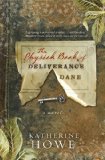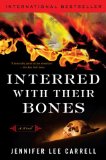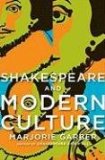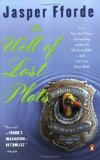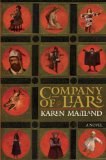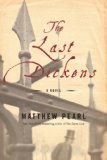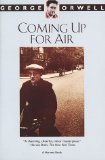 I stayed up until the wee hours of the morning this morning to finish Katherine Howe’s debut novel The Physick Book of Deliverance Dane. This novel intertwines two stories. The first is the story of graduate student Connie Goodwin, who we meet as she is sitting for her oral qualifying exam for the doctoral program in history at Harvard. The qualifying exam is a clever device, which allows for Howe to give readers unfamiliar with the Salem Witch Trials some background without feeling too much like exposition. Before we meet Connie, however, we meet Deliverance Dane, a healer or cunning woman attending to a sick little girl. The stories of these two women intertwine when Connie agrees to prepare her grandmother’s house in Marblehead for sale. In perusing the bookshelves, Connie finds an old Bible with a key inside. She pulls a piece of parchment with the name Deliverance Dane written on it out of the key. Her pursuit of Deliverance Dane and her story, as well as the story of her Physick Book, become Connie’s quest.
I stayed up until the wee hours of the morning this morning to finish Katherine Howe’s debut novel The Physick Book of Deliverance Dane. This novel intertwines two stories. The first is the story of graduate student Connie Goodwin, who we meet as she is sitting for her oral qualifying exam for the doctoral program in history at Harvard. The qualifying exam is a clever device, which allows for Howe to give readers unfamiliar with the Salem Witch Trials some background without feeling too much like exposition. Before we meet Connie, however, we meet Deliverance Dane, a healer or cunning woman attending to a sick little girl. The stories of these two women intertwine when Connie agrees to prepare her grandmother’s house in Marblehead for sale. In perusing the bookshelves, Connie finds an old Bible with a key inside. She pulls a piece of parchment with the name Deliverance Dane written on it out of the key. Her pursuit of Deliverance Dane and her story, as well as the story of her Physick Book, become Connie’s quest.
As I said in my previous post, I really enjoyed this book for several reasons. The subject matter is a story I’ve always found fascinating. I was also, as a genealogist, able to relate to Connie’s search through generations for the book and the people whose lives it touched. There is a moment in the book when Connie and Sam, a “steeplejack” whom she meets as he’s restoring an old church, wax philosophical about people who have lived in the past:
“It’s weird, isn’t it?” asked Sam, leaning closer to her over the card table and dropping his voice.
“What’s weird?” she said, turning to him.
“That you can have this whole entire life, with all your opinions, your loves, your fears. Eventually, those parts of you disappear. And then the people who could remember those parts of you disappear, and before long all that’s left is your name in some ledger. This Marcy person—she had a favorite food. She had friends and people she disliked. We don’t even know how she died.” Sam smiled sadly. “I guess that’s why I like preservation better than history. In preservation I feel like I can keep some of it from slipping away.” (76)
Connie responds:
“I can see that. But history’s not as different as you might think.” She brushed her fingers over Marcy Lamson’s name scrawled on the page. “Don’t you think Marcy would be surprised if she knew that some random people in 1991 were reading her name and thinking about her? She probably never even imagined 1991. In a way”—Connie hesitated—”it offers her a kind of immortality. At least this way she gets to be remembered. Or thought about. Noticed.” (76)
Those are thoughts that I think cross the minds at some point of almost anyone who studies his/her family history. I have often wondered about the name in my family research in the same way that Sam describes, while also thinking, as Connie does, that they might be surprised to remembered or noticed so long after they’re gone. I don’t know how my great-great-grandmother Stella would feel about my publishing her diary, for instance. She might actually not have been too happy about it!
Howe’s research shines in the period detail she crafts for scenes set in the past, as well as the description of Connie’s grandmother’s home on Milk Street and the environs around Harvard, Salem, and Marblehead. She has also clearly researched witchcraft and divination, and her descriptions of spells ring with authenticity.
Katherine Howe descends from two of the accused witches: Elizabeth Howe, who was executed, and Elizabeth Proctor, whom many may remember as the wife of The Crucible‘s protagonist, John Proctor. I cannot imagine having this sort of family history without being interested in the subject matter.
Howe conducted an interview with Wonders and Marvels that is well worth a listen, and via Twitter, she directed me to A Midwife’s Tale: The Life of Martha Ballard, Based on Her Diary, 1785-1812, which she describes as part of the inspiration for Prudence Ballard’s diary in the novel. I look forward to reading more of her work. I know a book is really good when after I finish it, I have the strange wish that I had written it myself.
